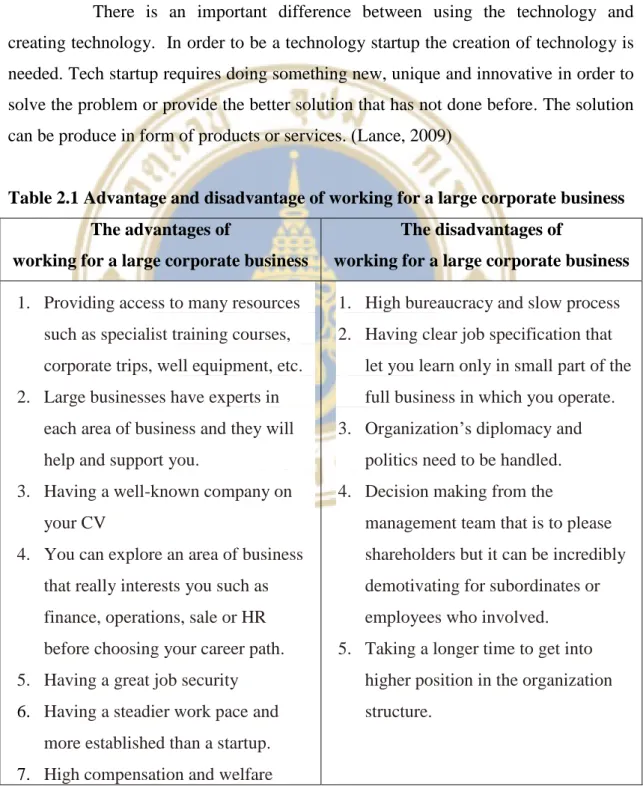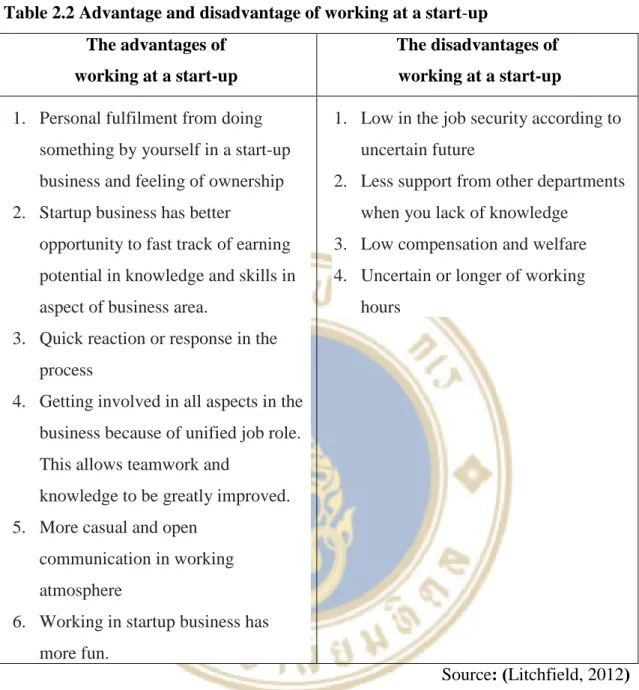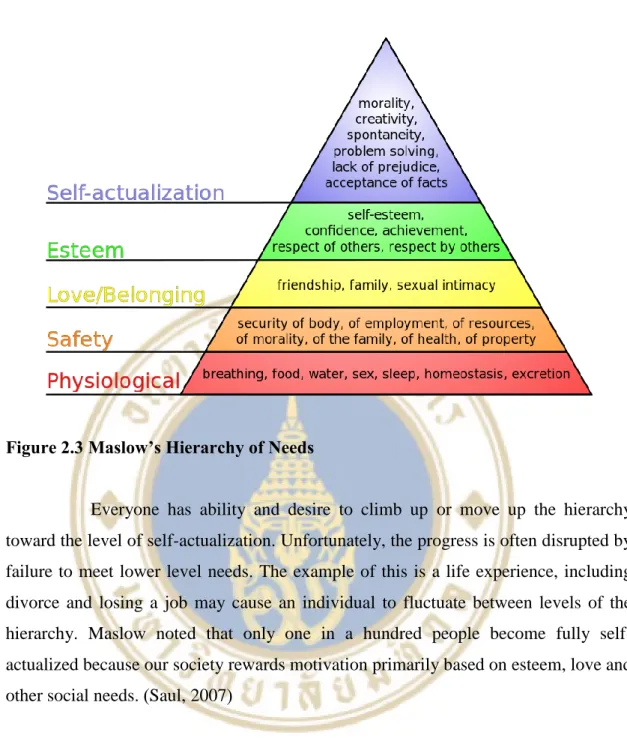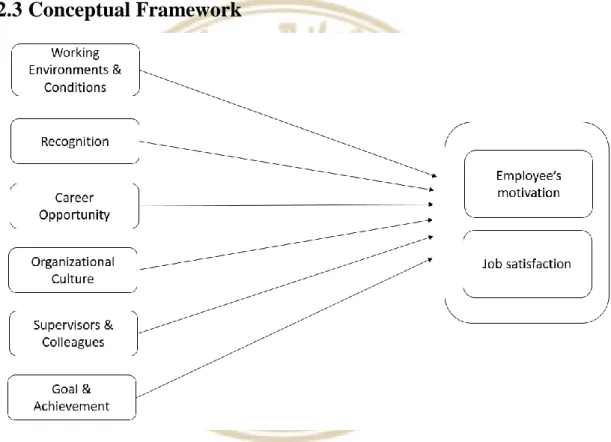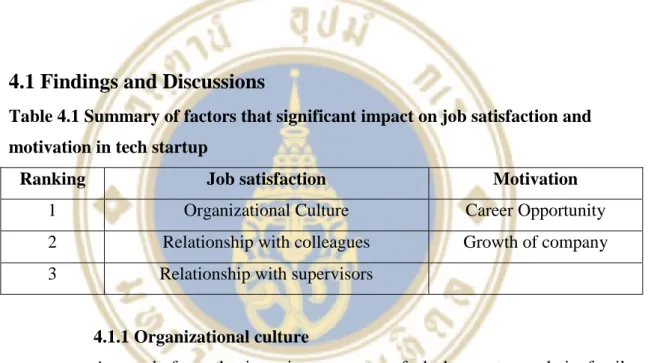KEY FACTORS AFFECTING EMPLOYEE MOTIVATION AND SATISFACTION IN TECH STARTUP COMPANY. CASE STUDY OF IBG COMPANY). The purpose of this paper is to investigate the factors influencing employee motivation and satisfaction in a technology start-up company through the case study of IBG company. The results indicated key factors that most influence job satisfaction and employee motivation in the technology startup company.
Moreover, these key factors will help in improving productivity, efficiency and also loyalty of employees in the technology startup. Currently, the trends of technology startups are increasing year by year, also in Thailand. This means that the technology startup is easy to establish but difficult to succeed.
To identify the significant factors that create job satisfaction or motivation for employees to work for a technology startup.

LITERATURE REVIEW
Definitions
- Job Satisfaction
- Motivation
- Stages of a company
According to Slocum and Hellriegel (2007), they described motivation as "the forces acting on or within a person that cause the person to act in a specific, goal-directed way". The company stages are separated into seven key stages in a typical business life cycle as described below. The business is now a legal one with the products and services and the company has its first customers.
VC is fiscal capital that is given to early stage, growth startup companies with high potential and that holds equity in the investee companies. At this stage, the business has the strong profits, customers and income, which increases with the arrival of additional opportunities and problems including competition in the market. The company must be able to carry out an effective management to support the growth of business activities.
The business is now maturing as a thriving business with a place in the market and loyal customers. The major challenges are finances, competition on the market and changing customer needs. Sheen, 2014) The companies in the decline phase of the life cycle will be challenged with declining sales, profits and negative cash flow.
The company should focus on new business opportunities and ventures and finding ways to sustain cash flow. It is the big opportunity for a business owner to either take advantage of all the efforts and years of work or close the business. The challenge is to deal with the financial and psychological aspects of a business loss and focus on the company's valuation.
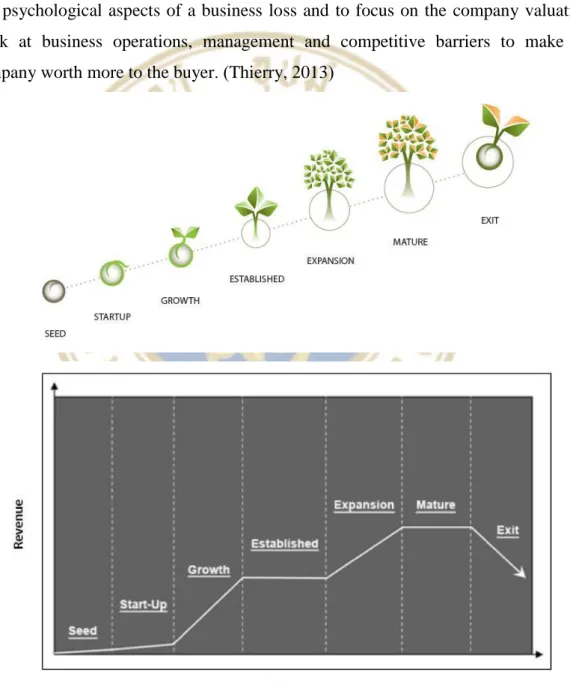
Theoretical Foundation
- Maslow’s Hierarchy of Needs
- Extrinsic & Intrinsic Motivation
Personal satisfaction by doing something yourself in a start-up and sense of ownership 2. Herzberg's Motivation-Hygiene Theory, explains that there are elements in the job and the job environment that lead to satisfaction or lack of satisfaction. Furthermore, the employee's motivation and job satisfaction should be treated separately following the conclusion of a number of researchers (Heneman et al., 1988; Igalens and Roussel, 1999; Pool, 1997) about the connection between an employee's motivation and job satisfaction.
It is the intrinsic components or performance, recognition job content that lead to employee satisfaction, and there are also extrinsic components or job environment that reduce employee satisfaction. Significant job satisfactions were found to be personal life, supervision, relationships with superiors, relationships with subordinates and relationships with peers. In Maslow's hierarchy of needs (Maslow, 1943) there are at least five sets of goals that we can call basic needs.
It refers to the need for personal growth and discovery that is present throughout a person's life. Everyone has the ability and desire to move up or move up the hierarchy to the level of self-actualization. An example of this is that a life experience, including divorce and losing a job can cause an individual to oscillate between levels of the hierarchy.
Extrinsic motivation refers to motivations outside of passions and personal self-esteem to perform a behavior, to engage in an activity to obtain a reward or to avoid punishment. Extrinsic motivation is anything outside that they need to achieve or acquire to increase motivation. This is a naturally motivating and important element in cognitive, social and physical development because it is through acting on the person's inherent interests and leading to growth in knowledge and skills.
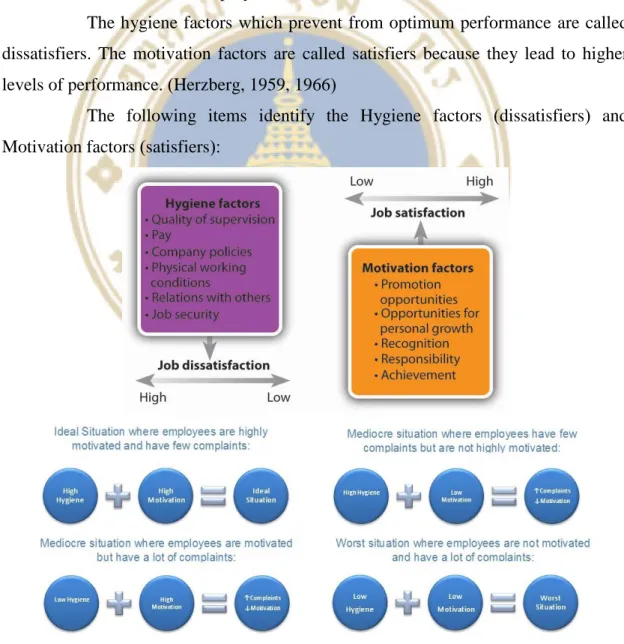
Conceptual Framework
When someone is intrinsically motivated, they are moved to act or behave for the pleasure or challenge, rather than because of external factors or rewards.
RESEARCH METHODOLOGY
Data Collection Methodology
The interviewees, who will be interviewed by semi-structured interview, are the current employees of IBG. The criteria for categorizing the interviewees has 2 aspects, which are employees who have worked for another company before joining IBG and employees who have worked in IBG for more than one year. The employees interviewed come from the customer service department, the sales department and the R&D department with different supervisors and colleagues to work with, and the total number of interviewees is thirteen.
We will analyze the data from the interview and categorize the main factors that most influence the motivation and satisfaction of employees in IBG. How long have you been working at IBG and how do you feel working here? If you were to improve something, what do you want to improve and how do you want it to be improved.
What is your opinion about Tech Startup Company like IBG Company compare with other venture companies. Can you give me some examples of good experience that made you happy to work here. What do you think of IBG Company's culture, in terms of policy and work style.
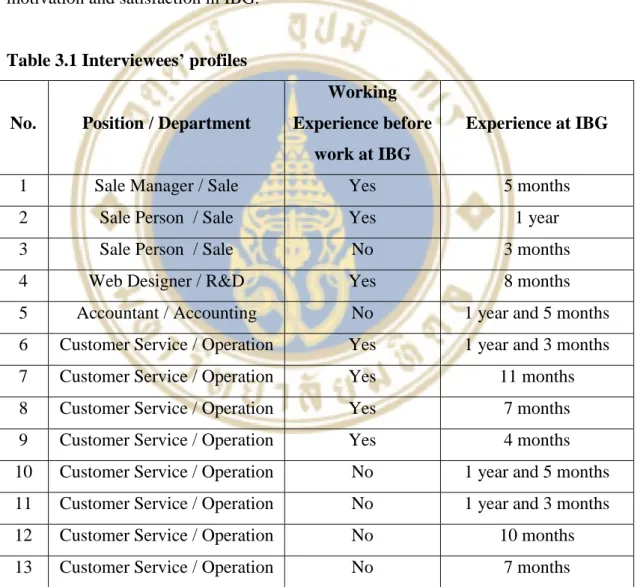
FINDINGS AND DISCUSSIONS
Findings and Discussions
- Organizational culture
- Relationship with colleagues
- Relationship with supervisors
- Working environments
- Recognition
- Career opportunity
- Achievement and goal
- Growth of company
Because this company is in its start-up phase, it has a small employee base of about thirty people. The opinions of some interviewees indicate that there is dissatisfaction with the job due to the unclear scope of the work and sometimes overload. But in the future, if the company does not move to the new office which has more space, they will feel uncomfortable to work because it is too crowded and there is no personal space.
Furthermore, it is easier to create recognition for the employees in the startup company than in the cooperative company. This is a key factor affecting the employee's motivation, the unclear career path can create the lack of interest to work in the company. Some said they want to improve themselves in skills, knowledge and performance at work and get a higher position when the company grows up in the future.
Company growth can influence employees to become more motivated, especially in startups like IBG. Some of the interviewees said that the factors that led them to join the company were that the company was at a start-up stage and the IT trend in social networks was growing. First, the company is in its early stages, which is good because some interviewees want to grow up alongside the company.
If they work in the cooperative company, they will be only a small part, but for startups, they can be a big part of the firm. Everyone in the company notices that company can further grow more in the future as long as the trend of social network does not die. But after they believe in the vision and mission of the company and see the growth of the company.
CONCLUSION & RECOMMANDETIONS
- Conclusion
- Recommendations
- Limitations
- Future Research
The recruitment process should filter out the one who does not fit into the working style of tech startup companies, for example a candidate who likes routine work and needs a clear work area and a strong organizational structure. This person will not fit into the organization and it will be difficult to improve his satisfaction and motivation. If a candidate likes getting new challenges, doing different kinds of work, flat structure, then they will fit the organizational culture and be easy to improve his satisfaction and motivation.
Because the organization can choose the right people and it is difficult to change for some people. The first limitation is the employees who are mostly from a single department in the organization. The second limitation is personal interviews on employee attitudes, which are usually subject to some bias.
The final limitation is the interviewer who is the supervisor of interviewees; some people may not share or express their real opinions or experiences. To make the research more efficient and useful, the future research should interview the employee from all departments in the organization and take larger samples to get the whole picture. Furthermore, the sample pool should focus more on those who have been working in the company for a long period of time.
Furthermore, the interviewer must be one who does not work in the same company; the interviewee will not share all their opinions because they worry that their answers will affect their work.
Sheen Chen (2014), What are the stages of a business life cycle and its challenges?, http://www.business2community.com/strategy/stages-business-lifecycle- challenges-0798879. Thierry Janssen (2013), The 7 stages of business life cycle, Just in Time Management Group http://www.justintimemanagement.com/en/The-7-stages-of- business-life-cycle. 1967, The Job and Career Satisfaction of Men School Principals, (National Principalship Study Series Monograph No. 5), Harvard and Cambridge Graduate School of Education, Cambridge, MA. 1976, "Job satisfaction among high school administrators", Educational Administration Quarterly, Vol. 1974, "Identification and Analysis of High School Principal Pressures in Relation to Job Satisfaction", Unpublished doctoral dissertation, Iowa State University.
Saul McLeod (2007), Maslow's Hierarchy of Needs, Psychology (BSc) Tutor at the University of Manchester. http://www.simplypsychology.org/maslow.html. Maslow, A. 1999), “A study of the relationship between compensation package, work motivation and job satisfaction”, Journal of Organizational Behaviour, Vol.

